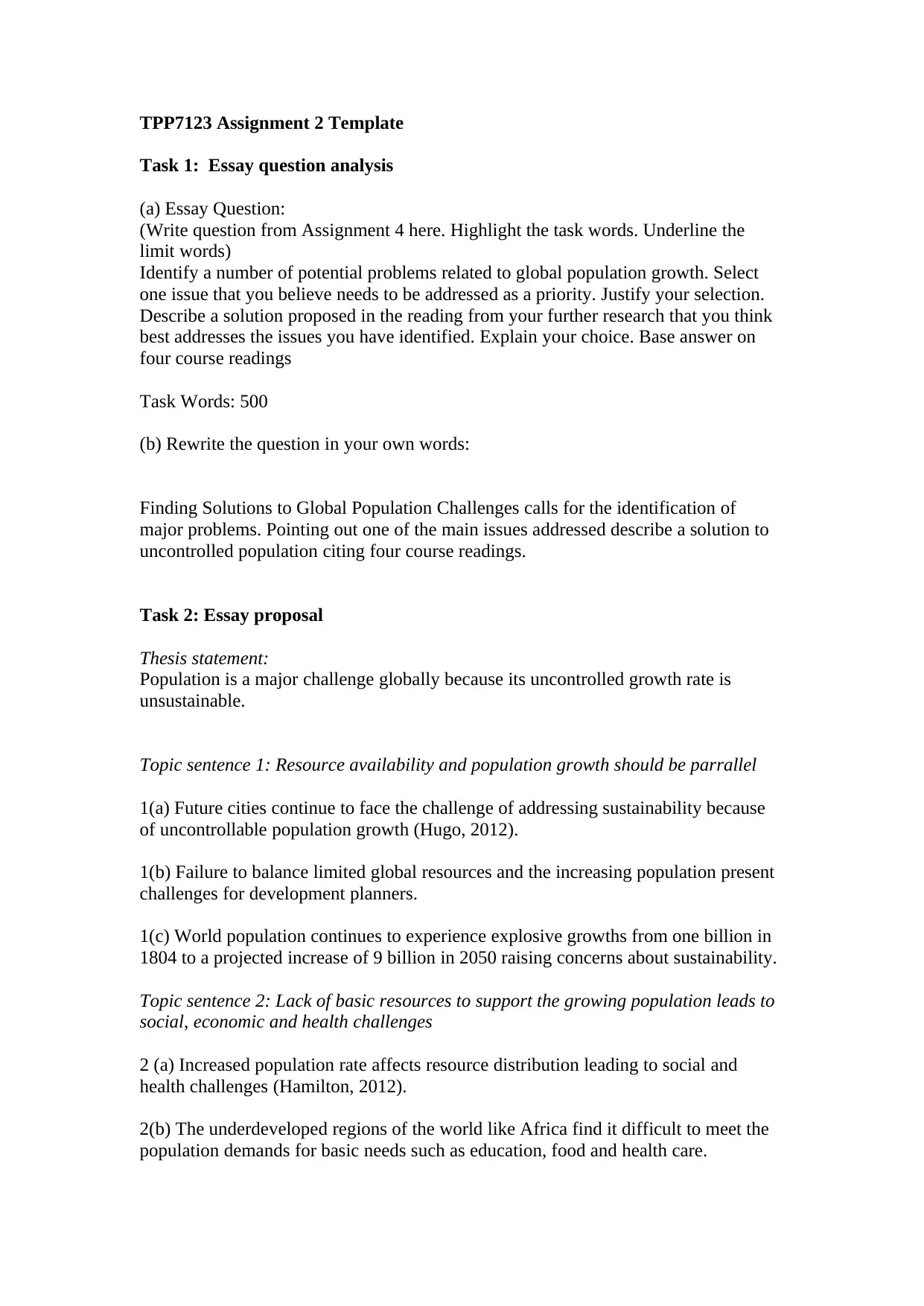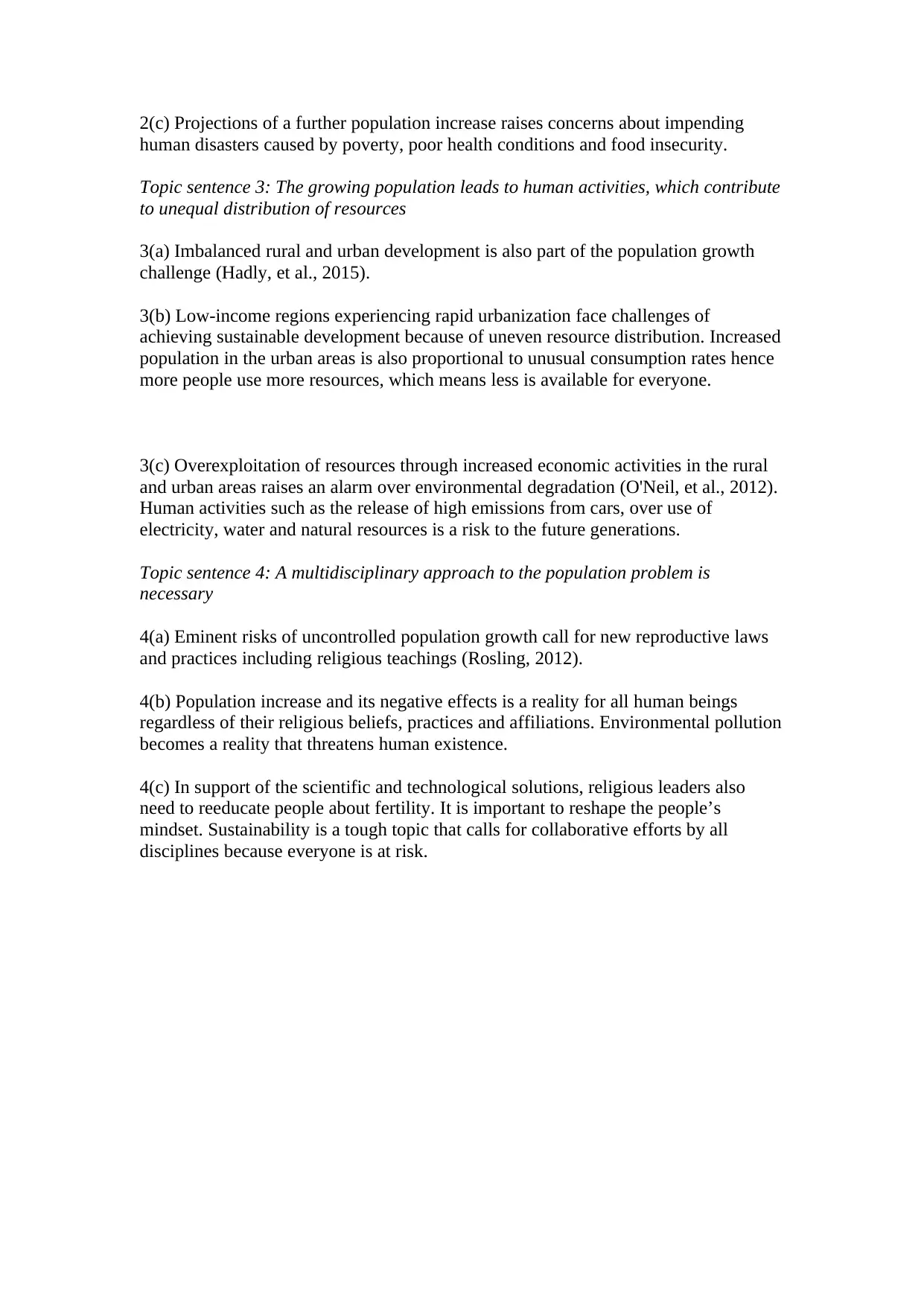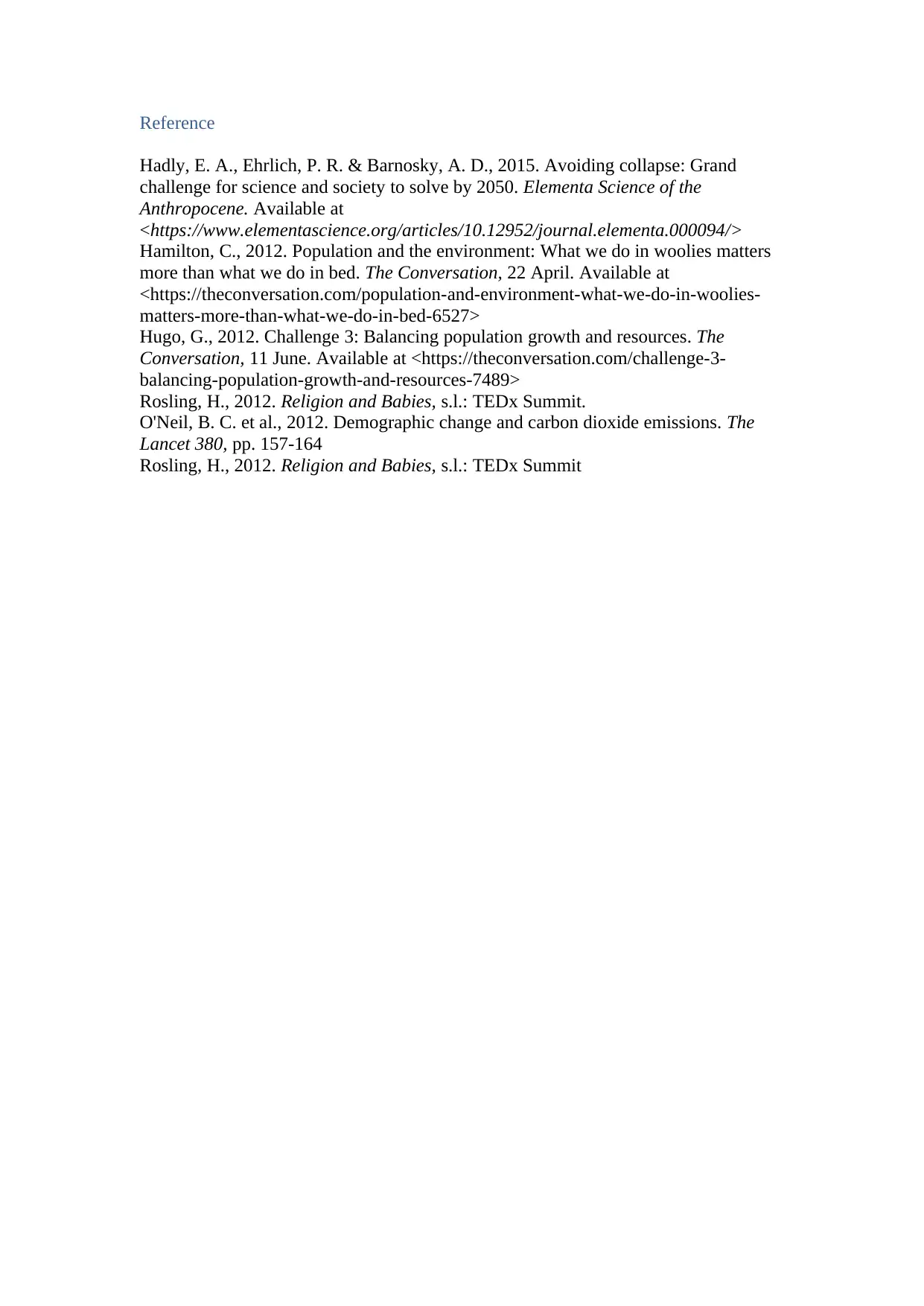Analyzing Global Population Growth: Essay and Proposed Solutions
VerifiedAdded on 2021/04/20
|3
|804
|49
Homework Assignment
AI Summary
This assignment comprises two tasks: an essay question analysis and an essay proposal. The first task requires identifying problems associated with global population growth, selecting a priority issue, justifying the selection, and describing a solution from provided readings. The second task involves crafting an essay proposal with a thesis statement arguing that uncontrolled population growth is unsustainable. The proposal includes topic sentences addressing resource availability, lack of basic resources leading to social and health challenges, the impact of human activities on resource distribution, and the need for a multidisciplinary approach. The assignment references several articles and publications to support the arguments presented, emphasizing the urgency of addressing population-related challenges and promoting sustainability through a collaborative effort.
1 out of 3










![[object Object]](/_next/static/media/star-bottom.7253800d.svg)